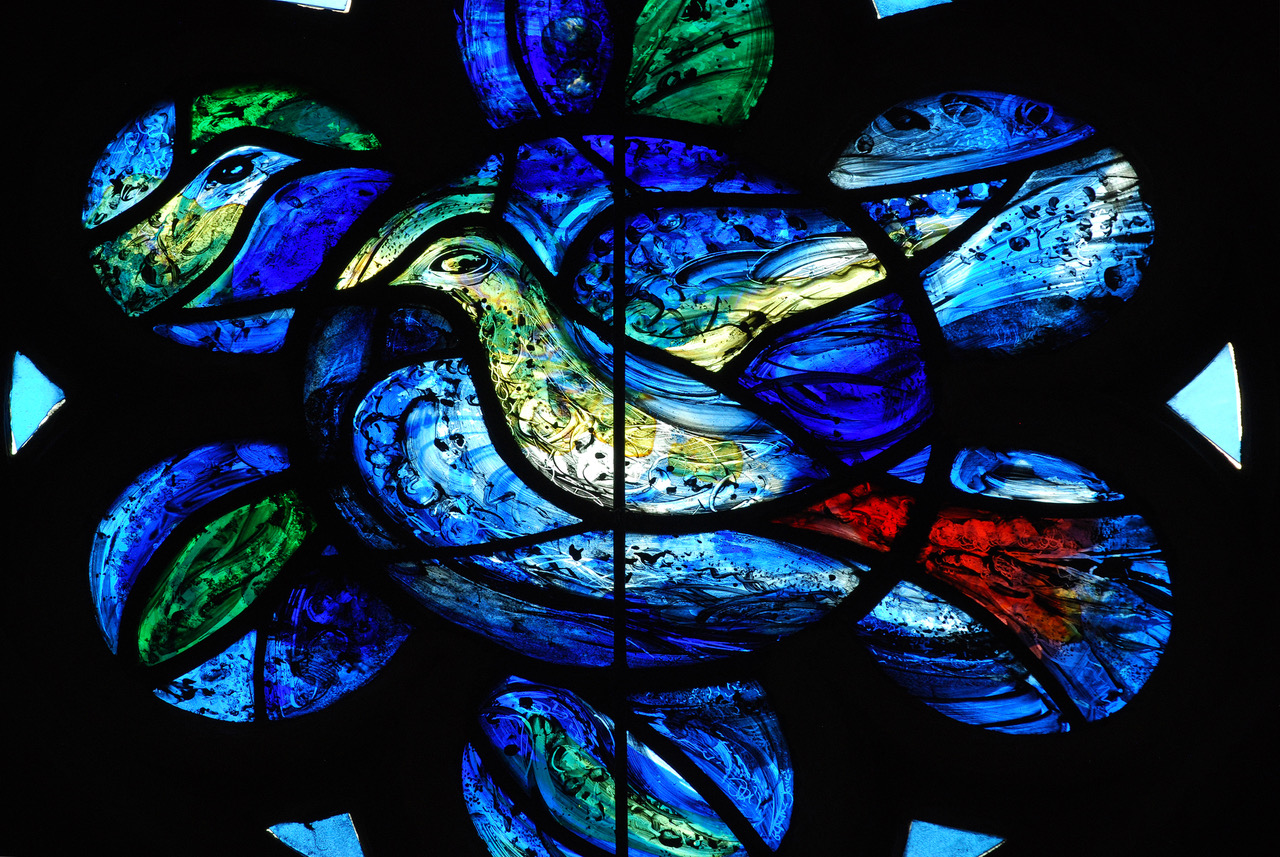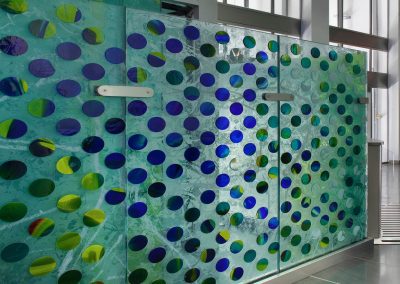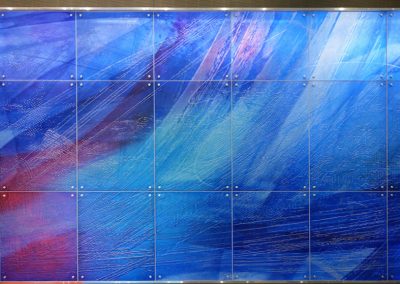When I first became involved with stained glass, I met several practitioners who were proud that the industry had not changed for over a thousand years. We, they proclaimed, are using the same technology used in the stained glass windows of Aachen Cathedral, made in 800AD. I was unsure if this was really something to be proud of, but I could well understand the pride in representing a construction tradition of such longevity,
It was my experience at the time that ‘contemporary’ architects found the idea of using leaded glass in their buildings unappealing. This was largely because they were pursuing a particular aesthetic, which involved large weightless, seamless spaces created with large single panels of glass. If not very large, then at the least 2.5+m tall panels that enclosed the illuminated spaces they wanted to create. Leaded glass does not really work in this context. Stained glass is, by its nature, a flaccid medium. It requires a multitude of relatively small frames to maintain itself in a vertical or horizontal plane.
I believe the first large scale window made with ‘laminated antique’ glass was made for the Tate Gallery at St Ives. I was the project manager on this project, and we managed to manufacture this 5m x 5m window in two large glass panels. The entire project was made with mouth-blown antique glass bonded with a liquid silicone to two large panels of float glass. The main reason this was achieved was due to the stubborn intransigence of the artist, Patrick Heron, who insisted that his beautiful design was not going to be broken up into twenty five one metre square panels. It is often due to the unreasonable demands of artists that experimentation and thus progress is made in the application of techniques and methodology. His refusal to compromise drove us to develop new techniques.
It is often science, industry and R & D raising along at break-neck speed that forces us to adopt new ideas. Sometimes artists baulk at the latest technique and swear on a stack of bibles they will never contaminate their art by adopting these mechanistic, inert, and reductive technologies which remove the “heart and soul” from the product. But after some years, sometimes reluctantly, they venture tentatively into the adoption of the new technology and discover that, although they lose some things, they gain others.
One thing that is often lost with industrial techniques is that float glass itself is a clinical product of total uniformity. Modern float glass manufacture creates glass that is as perfectly flat as can be. There is not a hint of texture or ripple in the glass. But, what artist wants their product to look like it just emerged from an anonymous, robot-run factory? We welcome the opportunity to add texture to the top surface of the glass – to diminish, if not remove, that shiny mirror-like reflection off the glass. With ‘slumped glass’, we can achieve very small amounts of texture, and many different types of texture. And, we can add in colour and achieve something that feels like it has life and soul in it. If we to the surface of the glass creates a lot of potential.
Technology makes the addition of art into almost any building more possible and less costly. But it needs a real understanding of the medium to make the final product something that truly adds to the architecture and to the design of space.






